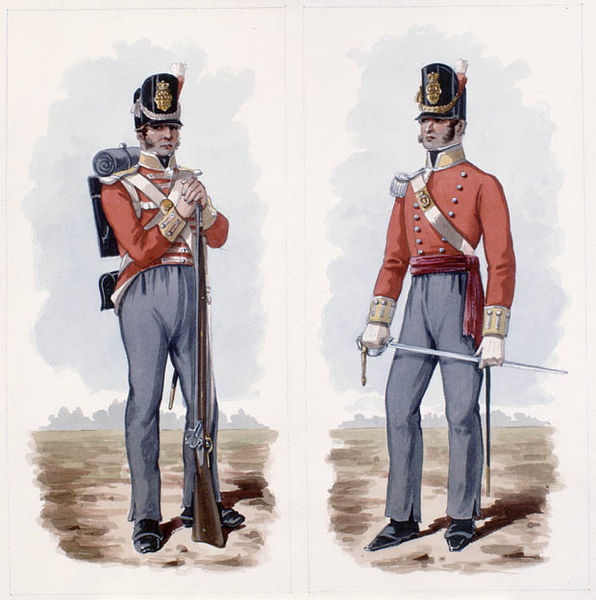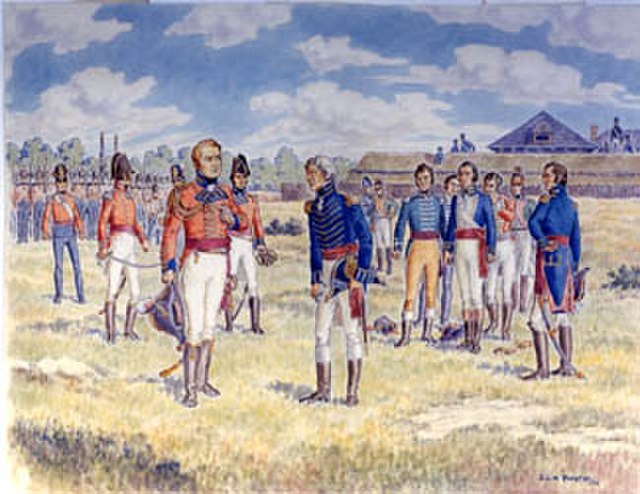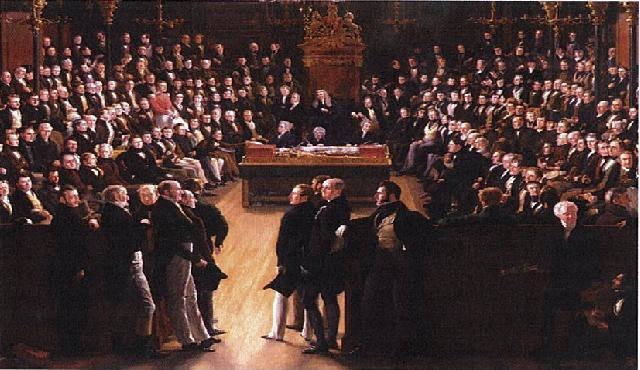The War of 1812 was fought by the United States and its allies against the United Kingdom and its allies in North America. It began when the United States declared war on Britain on 18 June 1812. Although peace terms were agreed upon in the December 1814 Treaty of Ghent, the war did not officially end until the peace treaty was ratified by the United States Congress on 17 February 1815.
Clockwise from top: Damage to the United States Capitol after the burning of Washington Mortally wounded Isaac Brock spurs on the York Volunteers at the battle of Queenston Heights USS Constitution vs HMS Guerriere The death of Tecumseh in 1813 Andrew Jackson defeats the British assault on New Orleans in 1815
Depiction of a British private soldier (left) and officer (right) of the period
American surrender of Detroit, August 1812
Oliver Hazard Perry's message to William Henry Harrison after the Battle of Lake Erie began thus: "We have met the enemy and they are ours".
United Kingdom of Great Britain and Ireland
The United Kingdom of Great Britain and Ireland was a sovereign state in Northwestern Europe that was established by the union in 1801 of the Kingdom of Great Britain and the Kingdom of Ireland. The establishment of the Irish Free State in 1922 led to the remainder later being renamed the United Kingdom of Great Britain and Northern Ireland in 1927.
The signing of the Treaty of Ghent ending the war with the United States (by Amédée Forestier, c. 1915)
A painting by James Pollard showing Trafalgar Square before the erection of Nelson's Column
Opening of the Liverpool and Manchester Railway in 1830
The House of Commons, 1833 by George Hayter commemorates the passing of the Reform Act of 1832. It depicts the first session of the newly reformed House of Commons on 5 February 1833. In the foreground, the leading statesmen from the Lords: Charles Grey, 2nd Earl Grey (1764–1845), William Lamb, 2nd Viscount Melbourne (1779–1848) and the Whigs on the left; and Arthur Wellesley, 1st Duke of Wellington (1769–1852) and the Tories on the right.








